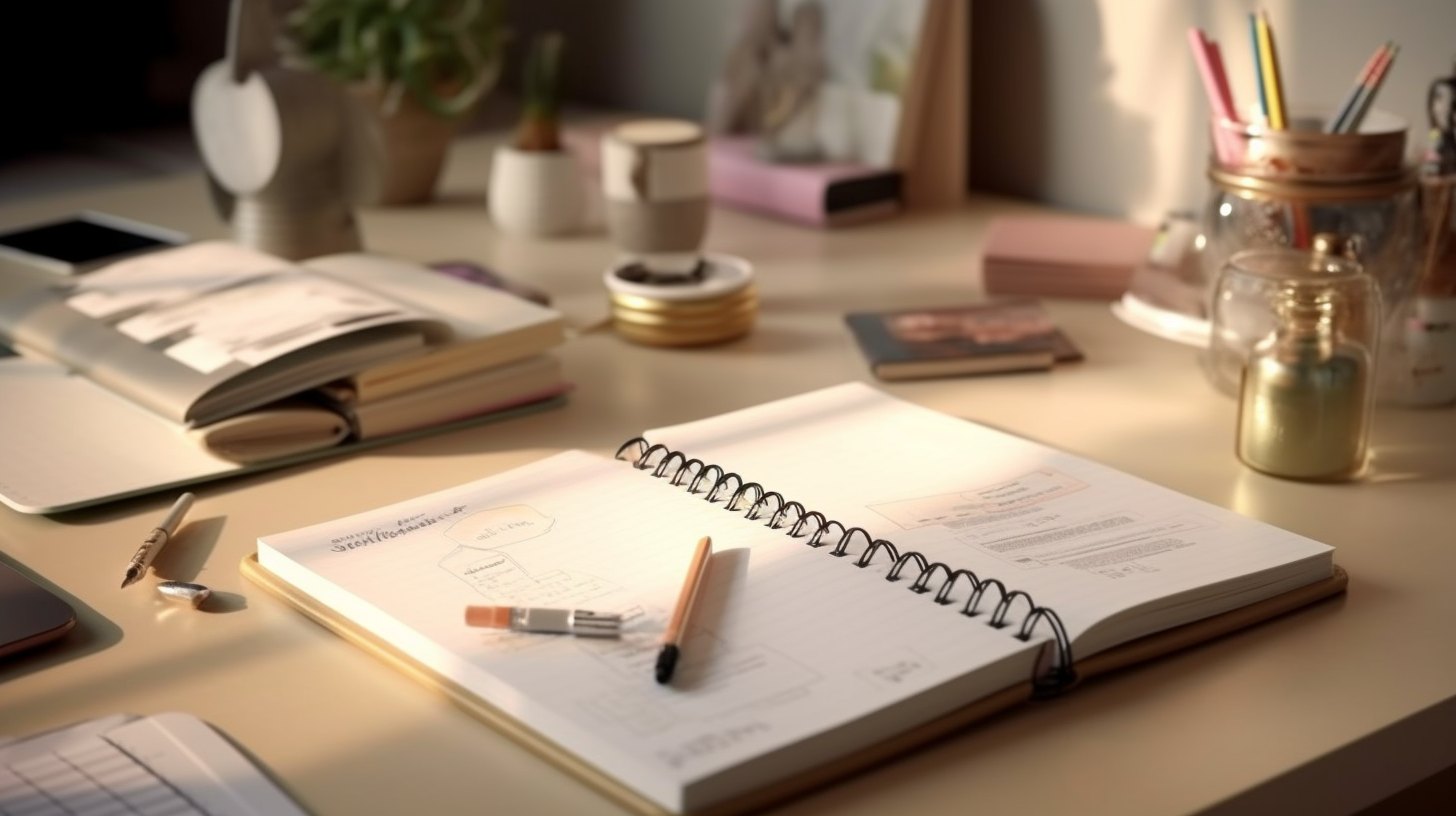Introduction
Keeping our daily lives organized can be a challenging task. With multiple responsibilities, deadlines, and appointments to juggle, it’s easy to feel overwhelmed and lose track of important tasks. That’s where a daily planner comes in handy. In this article, we will explore some practical tips and ideas for organizing your daily planner effectively. By implementing these strategies, you can maximize your productivity, stay on top of your schedule, and ensure that nothing falls through the cracks.
Table of Contents
- Introduction
- Importance of Daily Planner Organization
- Set Up Your Planner for Success
- Choose the Right Planner
- Customize Your Planner Sections
- Establish a Daily Routine
- Prioritize Your Tasks
- Categorize Your Tasks
- Use a Priority System
- Rank Your Tasks by Importance
- Time Blocking Technique
- Allocate Time Slots for Tasks
- Schedule Breaks and Downtime
- Be Realistic with Time Estimates
- Utilize To-Do Lists
- Create a Master To-Do List
- Break Down Tasks into Smaller Steps
- Cross Off Completed Tasks
- Incorporate Habit Tracking
- Identify Key Habits to Track
- Use Visual Cues and Symbols
- Celebrate Milestones and Progress
- Review and Reflect
- Daily Review Sessions
- Weekly and Monthly Reflection
- Make Adjustments as Needed
- Conclusion
Importance of Daily Planner Organization
Daily planner organization is essential for maintaining productivity and staying on top of your responsibilities. It provides structure, clarity, and a sense of control over your day. By effectively organizing your planner, you can:
- Prioritize tasks and allocate time for each.
- Stay focused and reduce overwhelm.
- Avoid missing deadlines or appointments.
- Track progress towards your goals.
- Enhance productivity and efficiency.
Set Up Your Planner for Success
To make the most of your daily planner, it’s important to set it up in a way that suits your needs and preferences. Here are some tips to get started:
Choose the Right Planner
Select a planner that aligns with your lifestyle and planning style. Consider factors like size, layout, and additional features (such as goal-setting sections or habit trackers). Choose a design that appeals to you and motivates you to use the planner consistently.
Customize Your Planner Sections
Tailor your planner sections to fit your unique needs. Create dedicated sections for tasks, appointments, goals, notes, and any other categories that are relevant to your daily life. Personalize it further with stickers, color coding, or other visual cues that appeal to you.
Establish a Daily Routine
Develop a routine for using your planner consistently. Set aside a specific time each day to review and plan for the upcoming day. This routine will help you make planning a habit and ensure that you start each day with a clear understanding of your priorities.
Prioritize Your Tasks
Effectively prioritizing tasks is critical for managing your time and accomplishing your goals. Here are some strategies to help you prioritize effectively:
Categorize Your Tasks
Group your tasks into categories based on their nature or urgency. For example, you may have categories like work, personal, health, or errands. This categorization helps you see the big picture and allocate time accordingly.
Use a Priority System
Assign a priority level to each task. You can use a numerical system (1, 2, 3) or labels like high, medium, or low priority. This system helps you focus on tasks that require immediate attention and ensures that important tasks don’t get overlooked.
Rank Your Tasks by Importance
Within each category, rank your tasks by importance. Identify the tasks that align with your goals or have a significant impact on your day. This ranking allows you to tackle the most important tasks first and ensures that they receive the attention they deserve.
Time Blocking Technique
Time blocking is a powerful technique that involves assigning specific time slots to different tasks or activities. Here’s how you can utilize this technique effectively:
Allocate Time Slots for Tasks
Estimate the amount of time each task will take and assign a dedicated time slot to it in your planner. Be realistic with your time estimates and avoid overloading your schedule. This practice ensures that you allocate enough time for each task and minimize time wasted on indecision.
Schedule Breaks and Downtime
In addition to work-related tasks, make sure to include breaks and downtime in your schedule. Taking regular breaks helps maintain focus and prevent burnout. Allocating time for activities you enjoy promotes work-life balance and overall well-being.
Be Realistic with Time Estimates
When assigning time slots, be mindful of your own working pace and energy levels. Don’t underestimate or overestimate the time required for each task. Be honest with yourself about how long it takes you to complete certain tasks, and adjust your time estimates accordingly. This will help you create a realistic and achievable schedule.
Utilize To-Do Lists
To-do lists are a classic tool for staying organized and managing tasks effectively. Here are some tips for making the most out of your to-do lists:
Create a Master To-Do List
Start by creating a master to-do list that includes all the tasks you need to complete. This list serves as a central repository for all your tasks, ensuring that nothing gets overlooked. Transfer tasks from your master list to your daily planner based on their priority and deadline.
Break Down Tasks into Smaller Steps
Large tasks can be overwhelming, making it difficult to get started. Break down these tasks into smaller, more manageable steps. This not only makes the task less intimidating but also provides a clear roadmap for progressing towards completion.
Cross Off Completed Tasks
As you complete each task, make sure to cross it off your to-do list. The act of crossing off tasks provides a sense of accomplishment and motivation. It also helps visually see the progress you have made throughout the day.
Incorporate Habit Tracking
Tracking habits in your daily planner can help you build and maintain positive routines. Here’s how you can incorporate habit tracking effectively:
Identify Key Habits to Track
Identify the habits you want to establish or maintain in your daily life. These could include habits related to health, productivity, self-care, or personal development. Choose a few key habits that align with your goals and are achievable within your daily routine.
Use Visual Cues and Symbols
In your daily planner, use visual cues and symbols to track your habits. You can use checkmarks, stars, or any other symbols that resonate with you. Each time you complete a habit, mark it in your planner. This visual representation helps you see your progress and motivates you to stay consistent.
Celebrate Milestones and Progress
Celebrate your accomplishments and milestones along the way. Acknowledge your progress and give yourself a pat on the back for sticking to your habits. This positive reinforcement boosts motivation and encourages you to continue striving for excellence.
Review and Reflect
Regularly reviewing and reflecting on your daily planner is crucial for continuous improvement. Here’s how you can make the most out of this practice:
Daily Review Sessions
Set aside a few minutes each day to review your planner. Reflect on what went well, what could have been improved, and any adjustments you need to make for the following day. This daily review helps you stay proactive and make necessary changes to optimize your productivity.
Weekly and Monthly Reflection
At the end of each week and month, set aside dedicated time for reflection. Review your planner from the past week or month, and assess your progress towards your goals. Identify patterns, strengths, and areas for improvement. Use this reflection as a guide for future planning and goal-setting.
Make Adjustments as Needed
Flexibility is key to successful planner organization. As you review and reflect on your planner, be open to making adjustments as needed. Your priorities and circumstances may change, and it’s important to adapt your planner accordingly. Modify your sections, prioritize tasks differently, or experiment with new techniques to find what works best for you.
Conclusion
Organizing your daily planner is a powerful tool for staying on top of your tasks, managing your time effectively, and achieving your goals. By following the tips and ideas presented in this article, you can optimize your daily planner for maximum productivity and success. Remember to personalize your planner, prioritize tasks, utilize time blocking, incorporate to-do lists and habit tracking, and regularly review and reflect on your progress. With these strategies in place, you’ll be well-equipped to tackle each day with confidence and efficiency.




